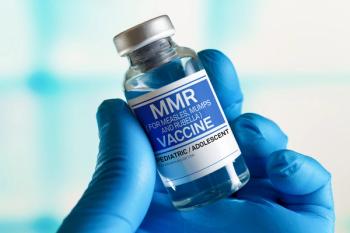
FDA Approves First Continuous Glucose Monitoring System with Fully Implantable Sensor
The FDA has approved the first fully implantable sensor to detect glucose in people 18 years of age and older with diabetes.
Senseonics was granted FDA approval for the Eversense Continuous Glucose Monitoring (CGM) system’s use in people 18 years of age and older with
“The FDA is committed to advancing novel products that leverage digital technology to improve patient care,” said FDA Commissioner Scott Gottlieb, MD, in a statement. “These technologies allow patients to gain better control over their health. This approval of a more seamless digital system that gives patients the ability to effectively manage a chronic disease like diabetes is a vivid illustration of the potential for these mobile platforms.”
The Eversense CGM system utilizes a small sensor—implanted just under the skin by a qualified health care provider during an outpatient procedure—to regularly measures glucose levels in adults with diabetes for up to 90 days. The implanted sensor works with a novel light-based technology to measure glucose levels, and sends information to a mobile app to alert users if glucose levels are too high or too low. The sensor is coated with a fluorescent chemical which, when exposed to blood sugar, produces a small amount of light that is measured by the sensor. Every 5 minutes, measurements are sent to a compatible mobile device that is running a device-specific mobile app.
According to the FDA, the agency evaluated clinical study data from 125 individuals aged 18 and older with diabetes, and reviewed the device’s effectiveness by comparing readings obtained by the Eversense CGM system to those obtained by a laboratory-based glucose analyzer. The safety of the Eversense CGM system’s 90-day implantable sensor, and the procedure used to implant it, was also evaluated. During these studies, the proportion of individuals experiencing a serious adverse event with the implanted sensor was less than 1 percent. The safety of the CGM system will also be evaluated in a post-approval study.
Potential adverse effects related to insertion, removal, and wear of the sensor include allergic reaction to adhesives, bleeding, bruising, infection,
References
FDA approves first continuous glucose monitoring system with a fully implantable glucose sensor and compatible mobile app for adults with diabetes [news release]. Silver Spring, MD: June 21, 2018; FDA website. www.fda.gov/NewsEvents/Newsroom/PressAnnouncements/ucm611454.htm. Accessed June 21, 2018.
Newsletter
Stay informed on drug updates, treatment guidelines, and pharmacy practice trends—subscribe to Pharmacy Times for weekly clinical insights.














































































































































































































